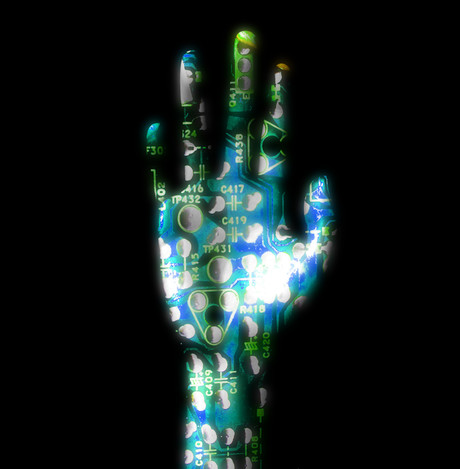Touchless gestures the next step for smartphones

New developments from the University of Illinois at Urbana-Champaign and Dow Electronic Materials in Marlborough, Massachusetts suggest that smartphones and other mobile devices will soon be controlled via touchless gestures, utilising new LED arrays that can both emit and detect light.
Researchers have reported the advance in the journal Science and suggest that it represents significant change to the functionality of displays, taking them into advanced interactivity.
The LEDs comprise a thin film of three types of minute nanorods which measure less than 5 nm in diameter. One type emits and absorbs visible light and the remaining two control charge. When combined, the LEDs are able to interact with light — emitting, sensing and responding. Researchers say that the speed with which the LEDs switch from emitting to detecting is so fast that, to the human eye, the display appears static. They say it is three orders of magnitude faster than standard display refresh rates and that LEDs can be programmed to respond to these signals in a number of ways.
This means that display brightness can be adjusted on a pixel-by-pixel basis, so where a shadow falls across a screen it will be dimmer and when it is lit by sunlight it will be brighter, maintaining a steady contrast in these varying conditions.
In addition, pixels are able to respond to an approaching finger, meaning that touchless gestures will become a reality. Further demonstrations showed that the arrays can respond to a laser stylus and can additionally convert that light to electricity.
Study lead Moonsub Shim says this is just like a solar cell.
“So not only can we enhance interaction between users and devices or displays — now we can actually use the displays to harvest light.
“So imagine your cell phone just sitting there collecting the ambient light and charging. That’s a possibility without having to integrate separate solar cells. We still have a lot of development to do before a display can be completely self-powered, but we think that we can boost the power-harvesting properties without compromising LED performance so that a significant amount of the display’s power is coming from the array itself,” Shim said.
In addition to interacting with users and their environment, nanorod LED displays can interact with each other as large parallel communication arrays. It would be slower than device-to-device technologies like Bluetooth, Shim said, but those technologies are serial — they can only send one bit at a time. Two LED arrays facing each other could communicate with as many bits as there are pixels in the screen.
“We primarily interface with our electronic devices through their displays, and a display’s appeal resides in the user’s experience of viewing and manipulating information," said study co-author Peter Trefonas, a corporate fellow in electronic materials at the Dow Chemical Company.
“The bidirectional capability of these new LED materials could enable devices to respond intelligently to external stimuli in new ways. The potential for touchless gesture control alone is intriguing, and we’re only scratching the surface of what could be possible,” Trefonas said.
The researchers did all their demonstrations with arrays of red LEDs. They are now working on methods to pattern three-colour displays with red, blue and green pixels, as well as working on ways to boost the light-harvesting capabilities by adjusting the composition of the nanorods.
All-electric haulage fleet under mining alliance
A strategic alliance between Newmont and Caterpillar will see the rapid deployment of an...
How to measure ROI of field service management software
Some ROIs are easier to calculate than others. It's important to consider both tangible and...
Preparing the grid for electric vehicles
A new $3.4 million trial will help support growing adoption of electric vehicles across Australia...




